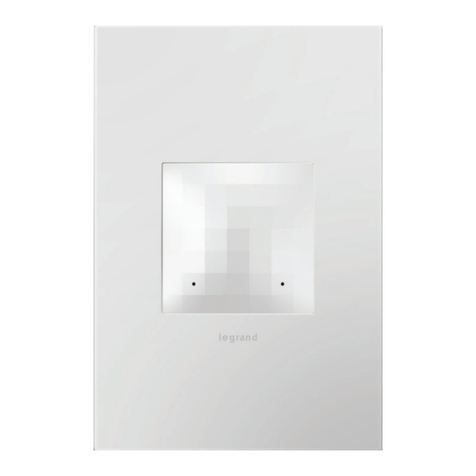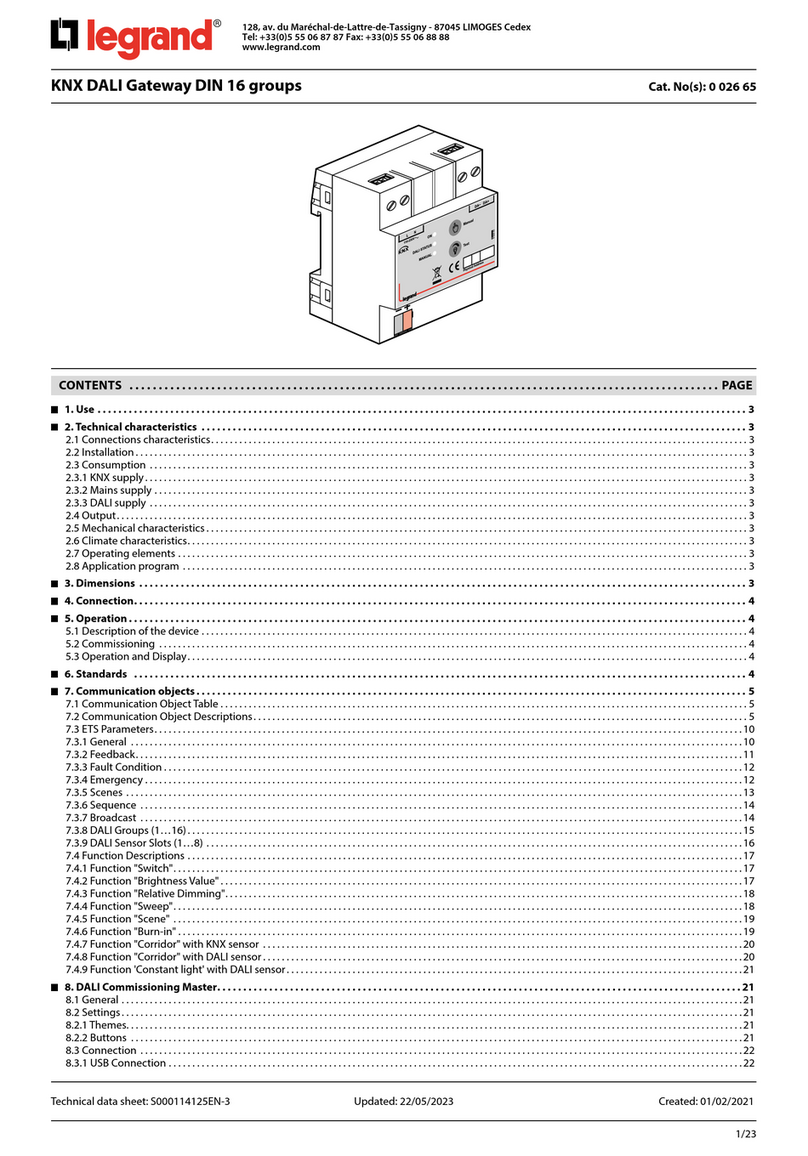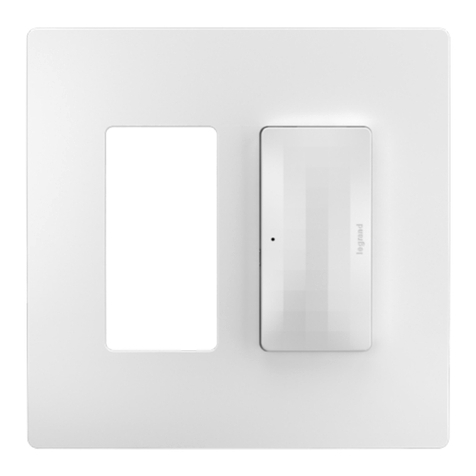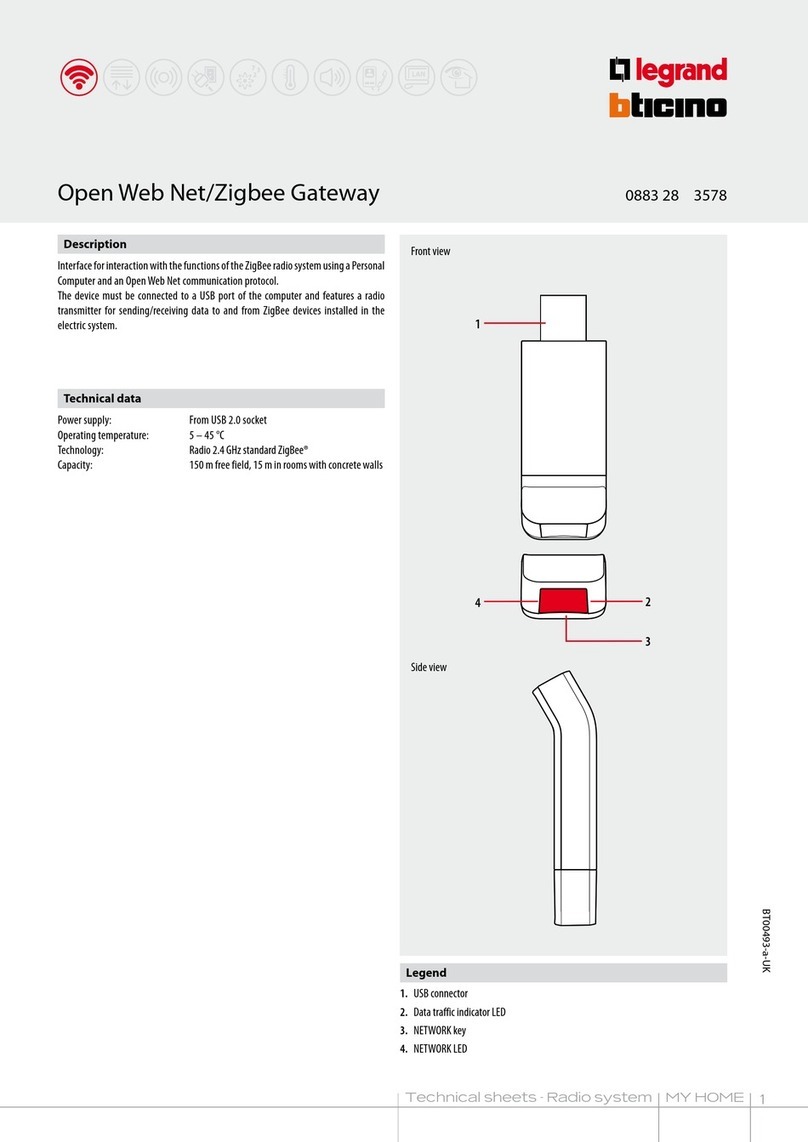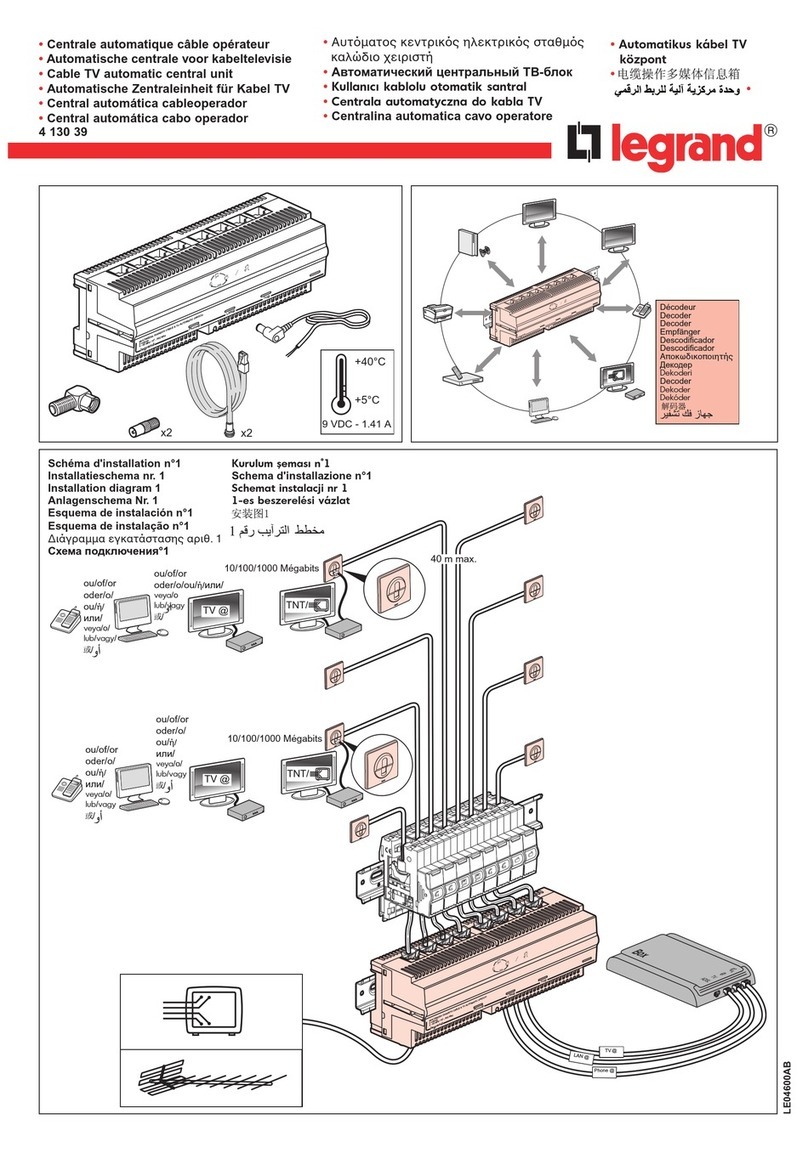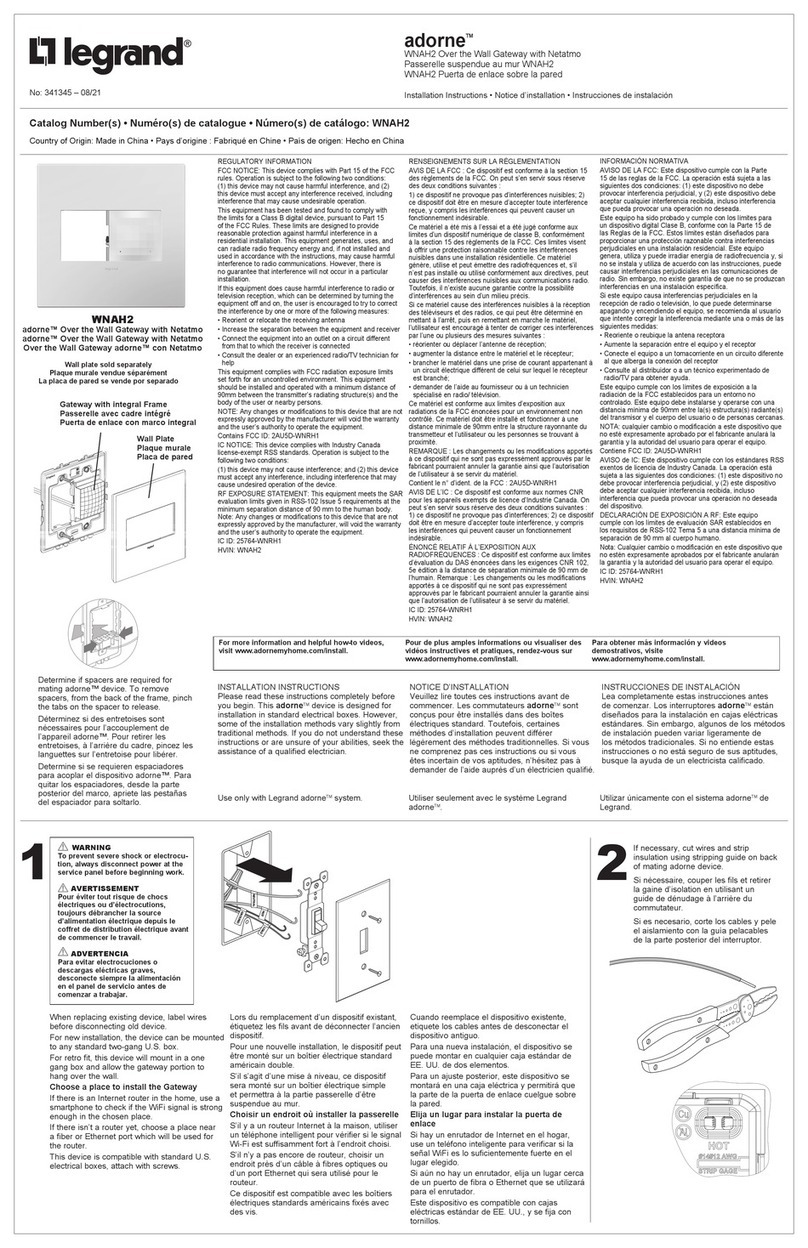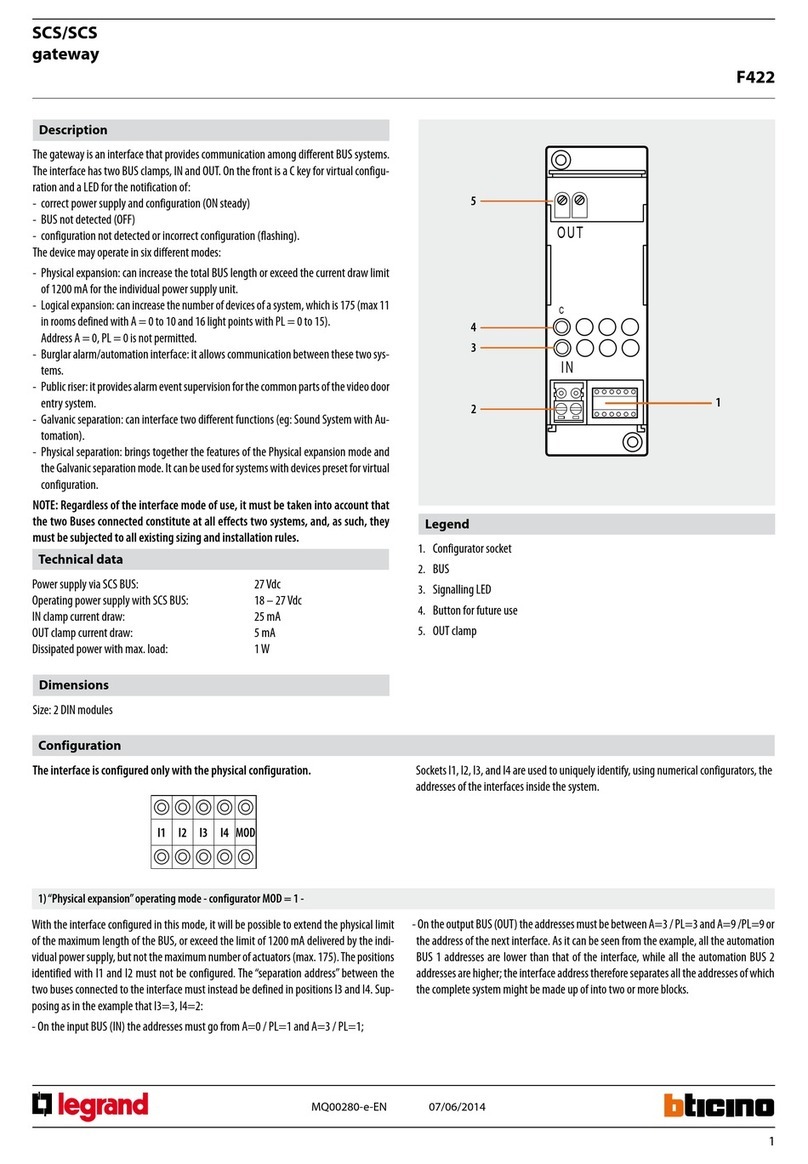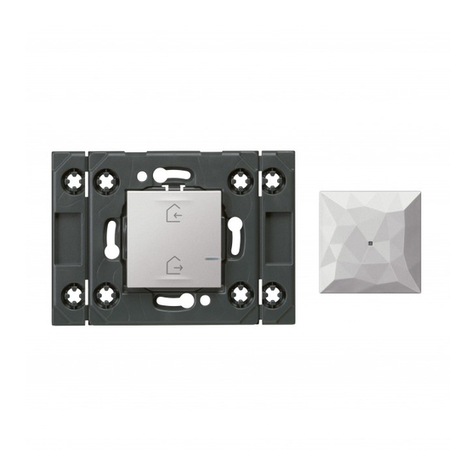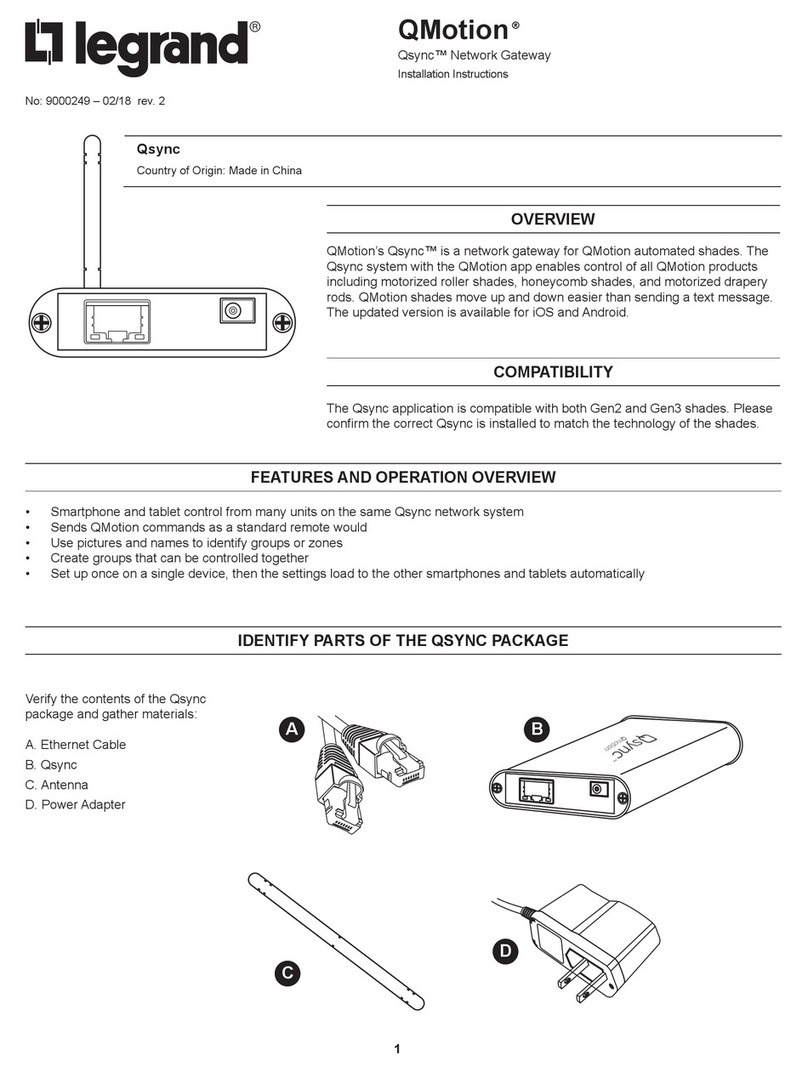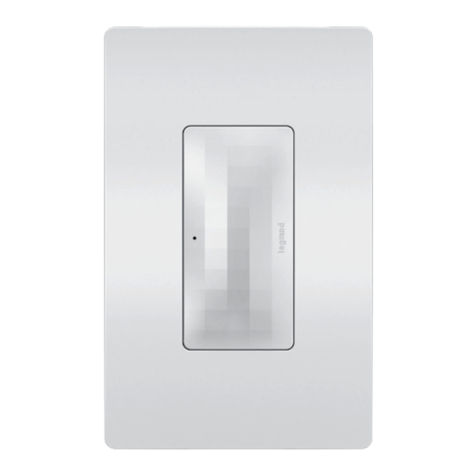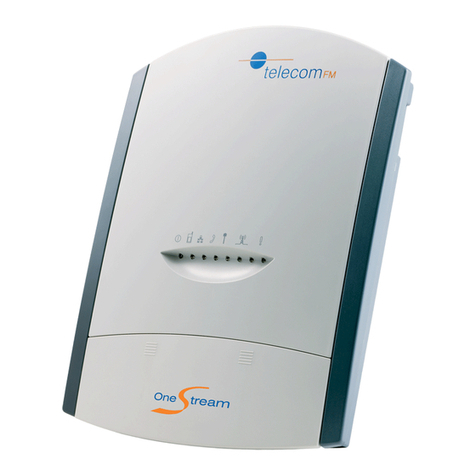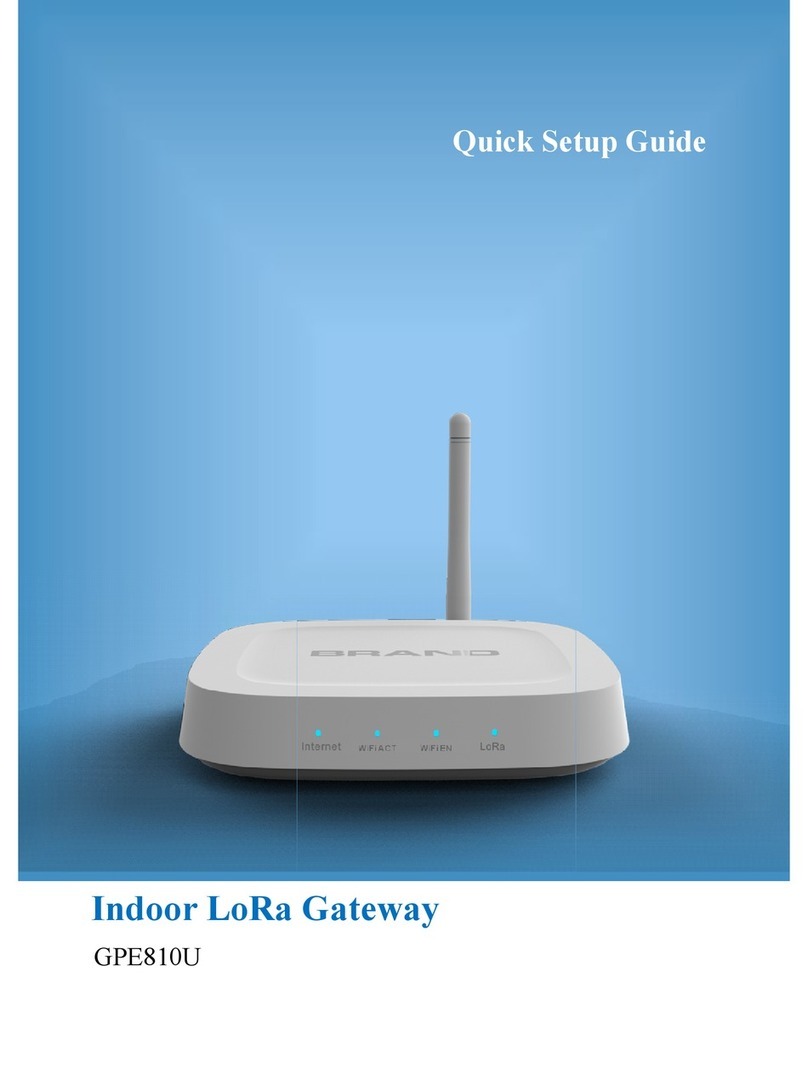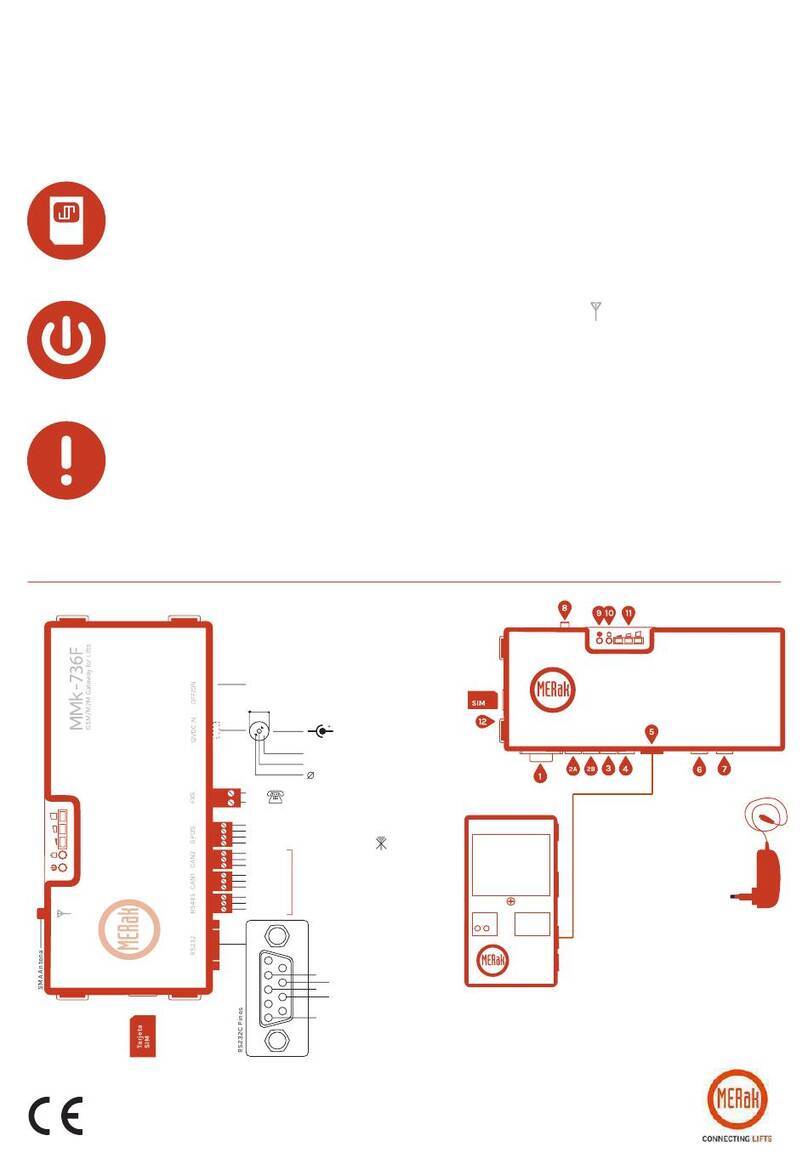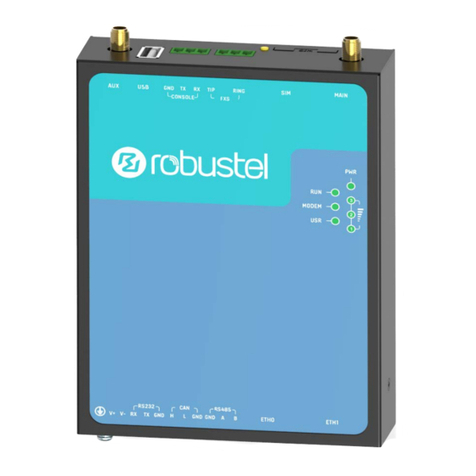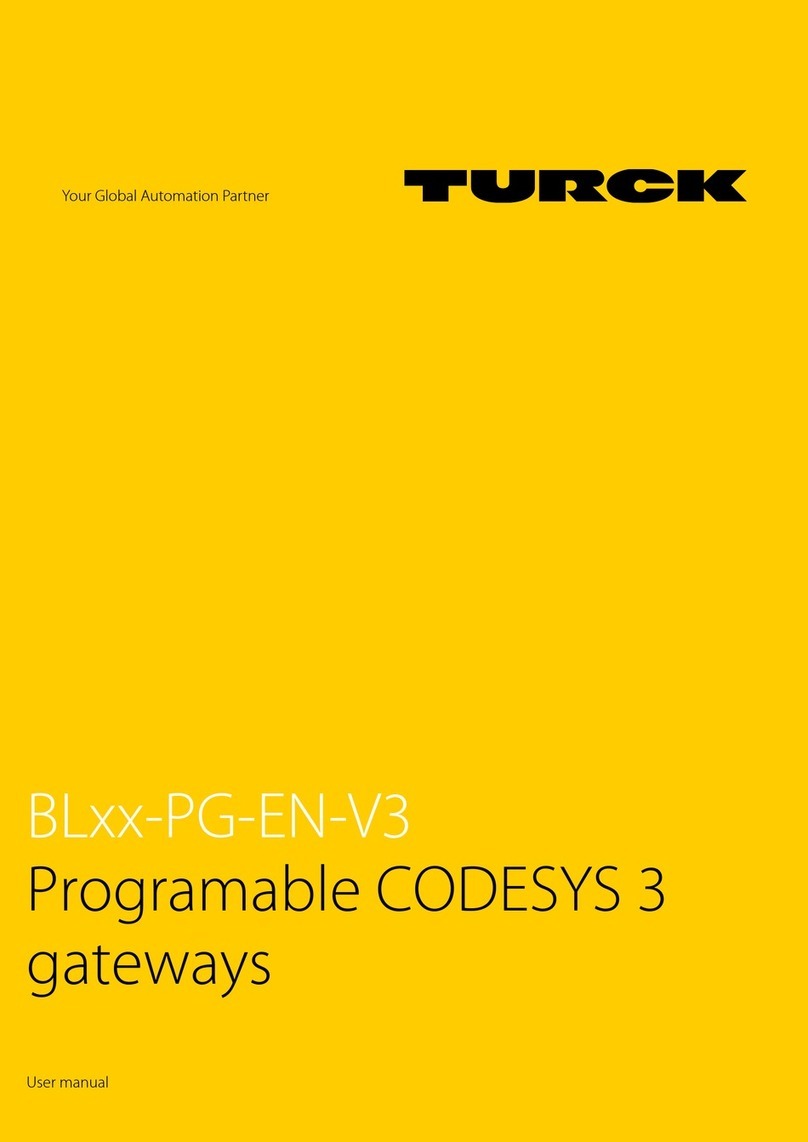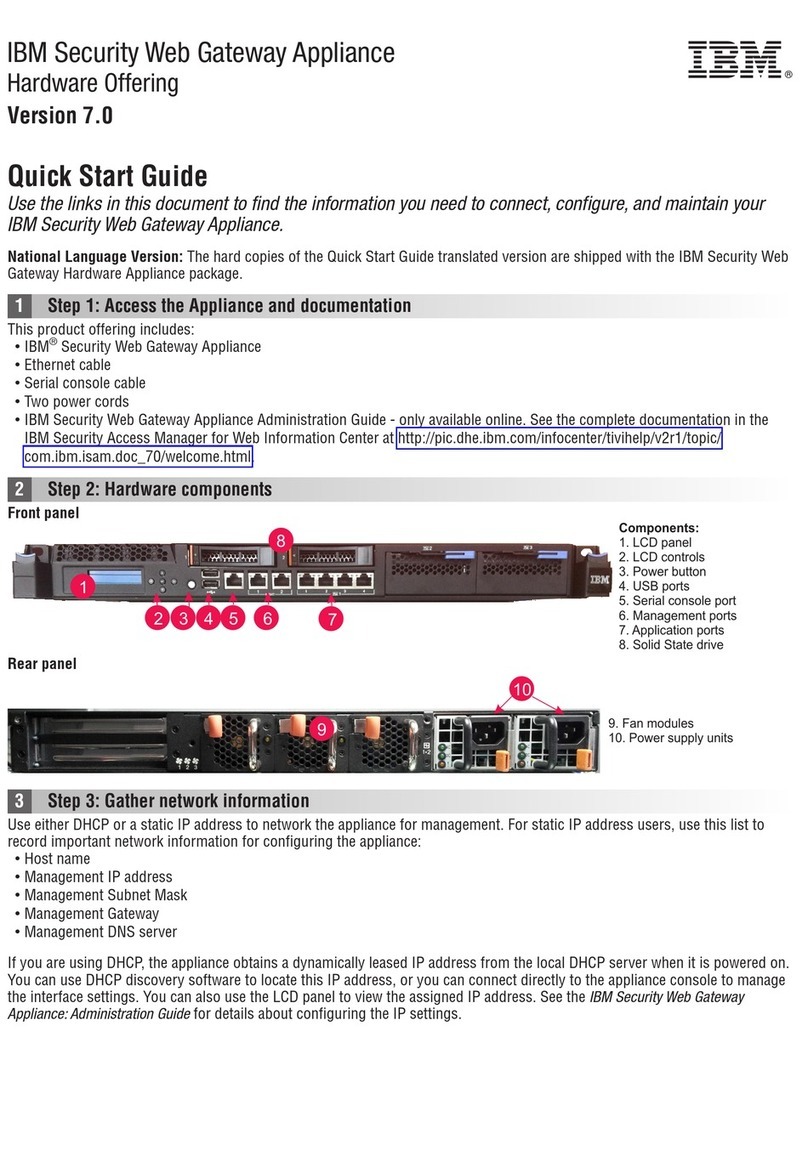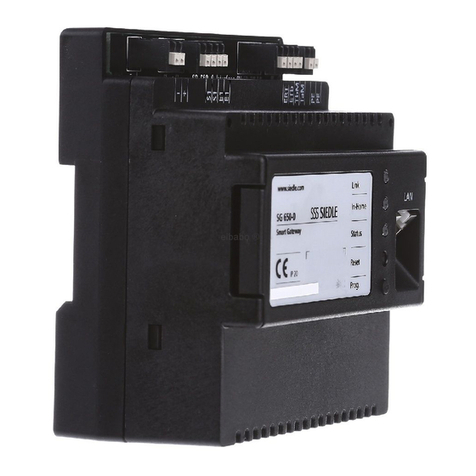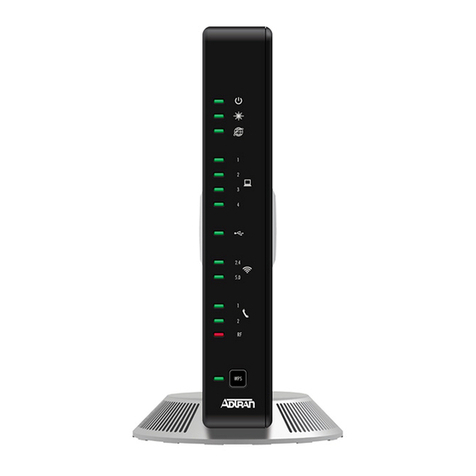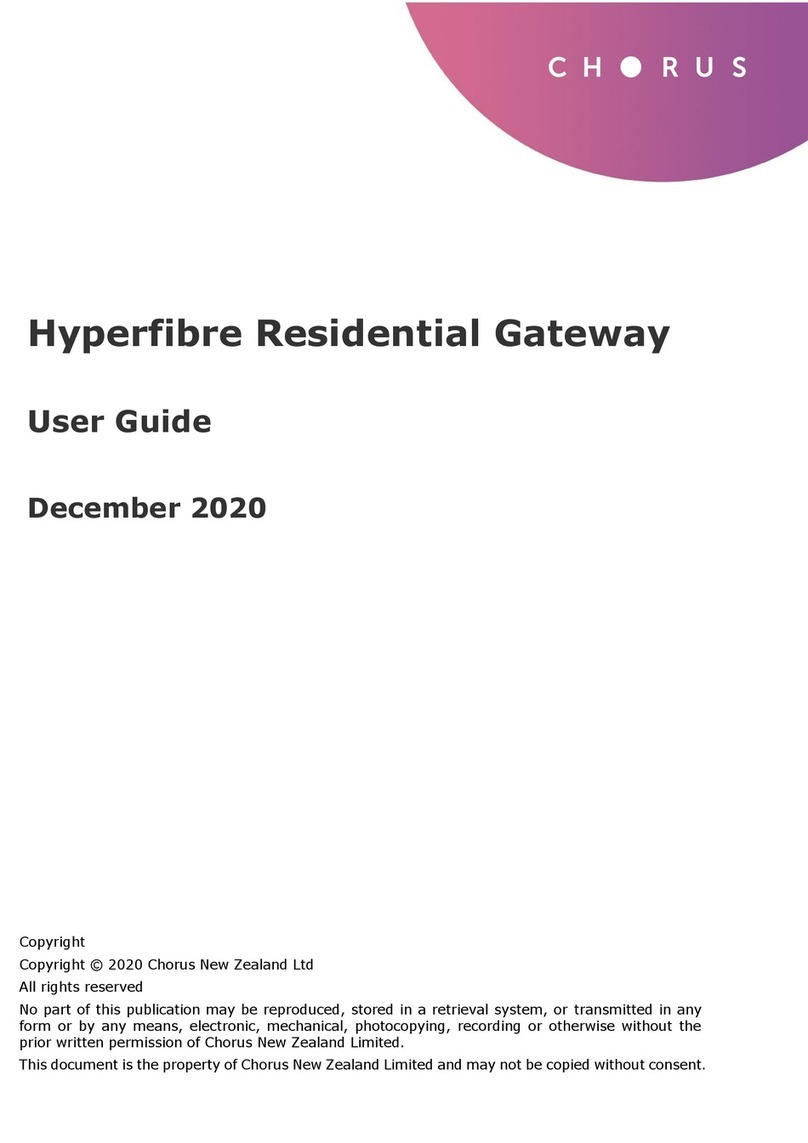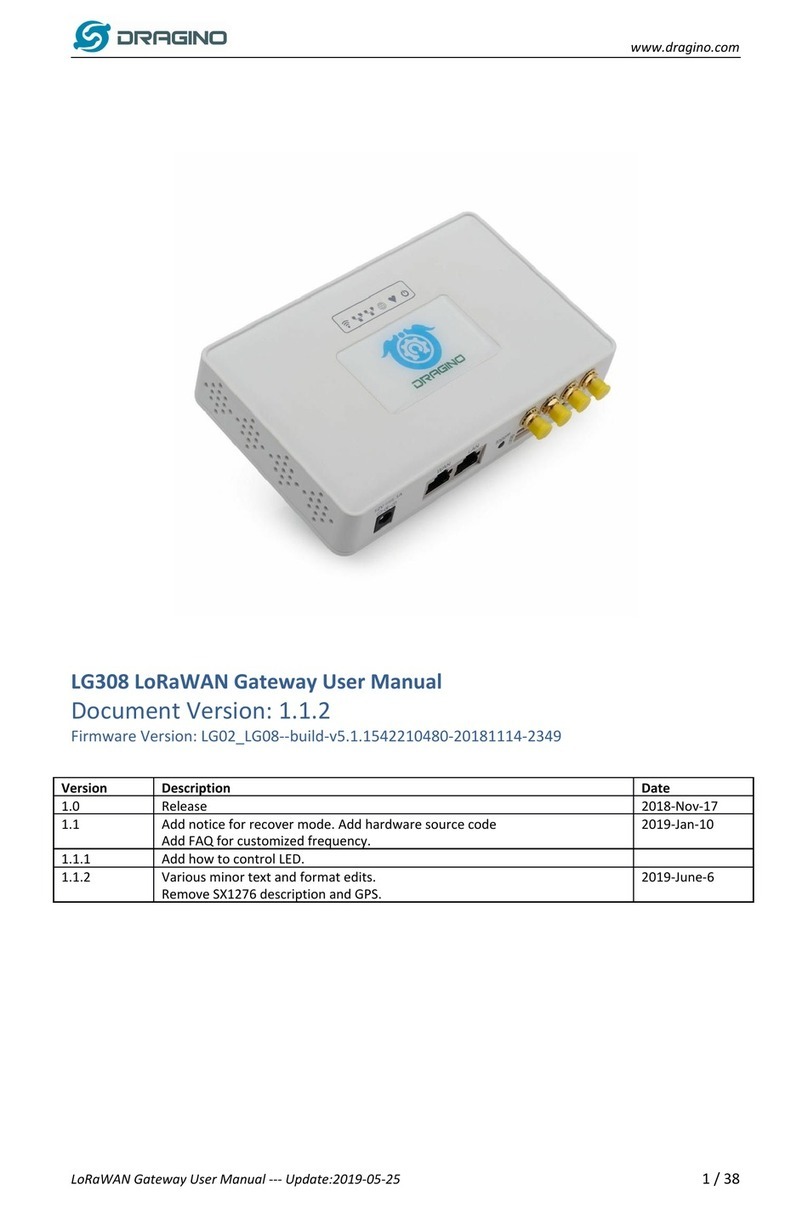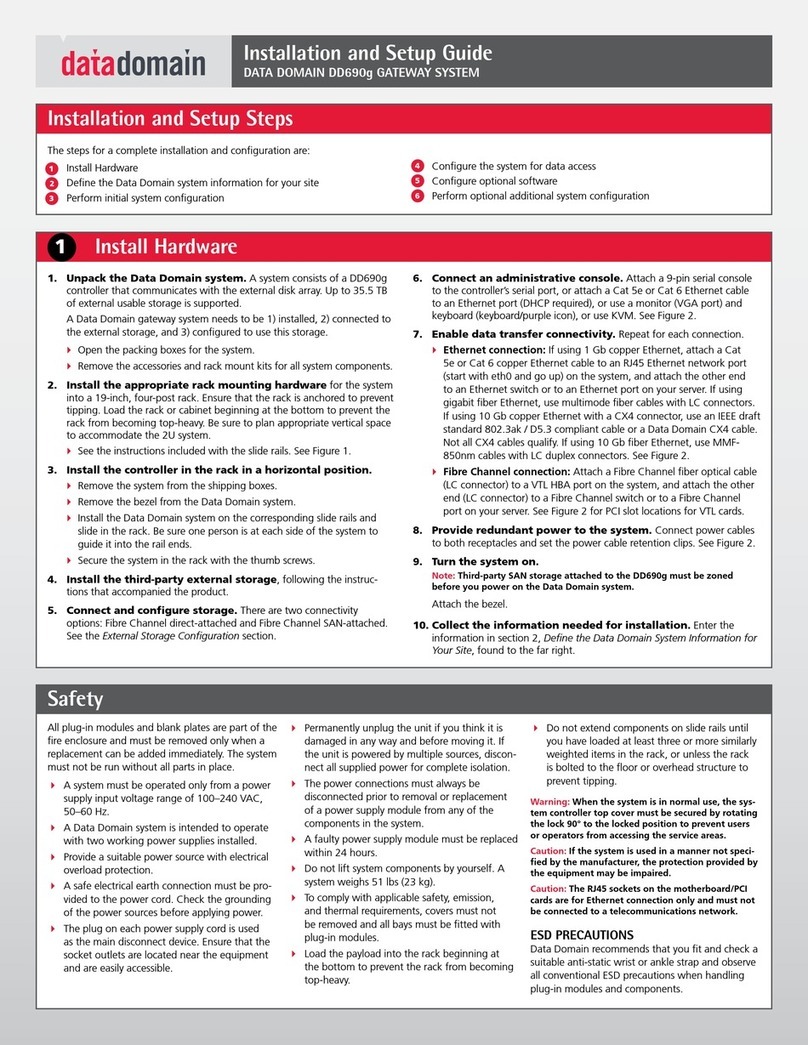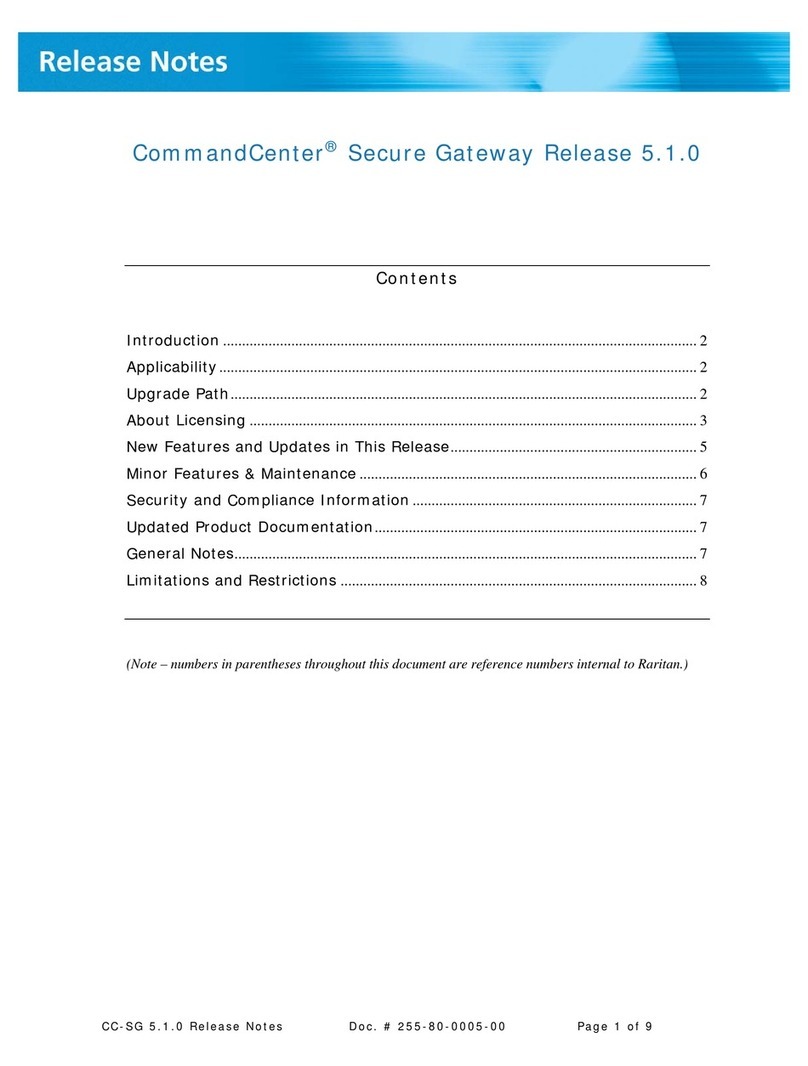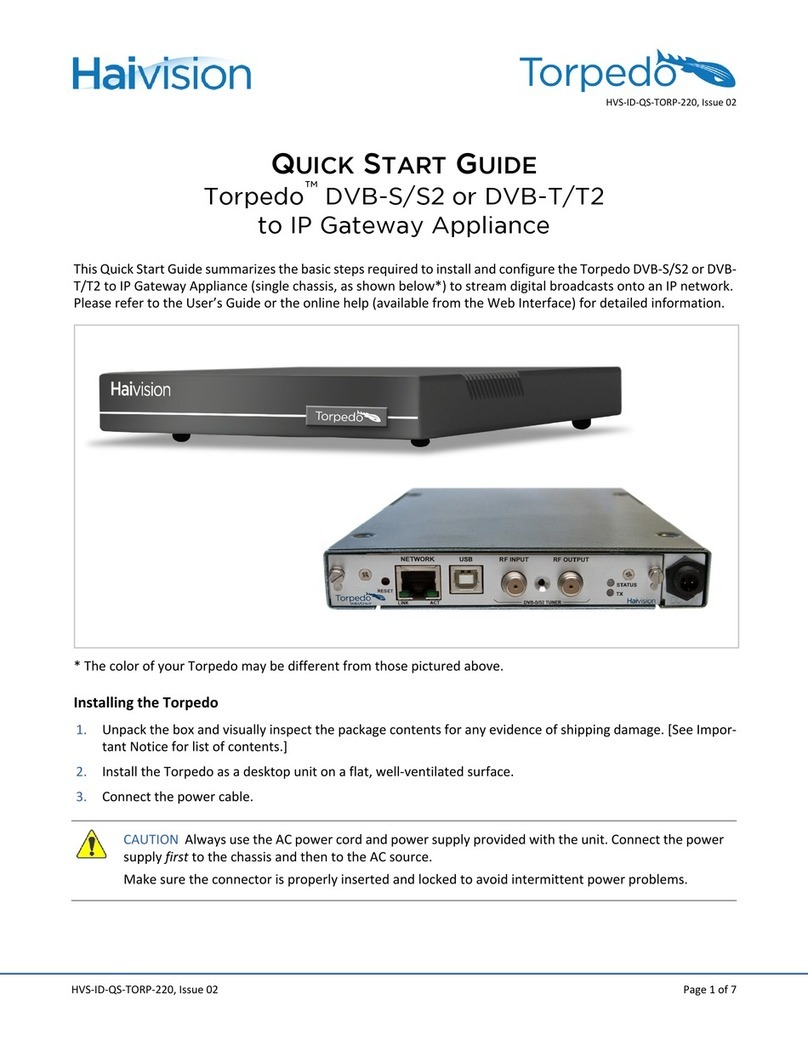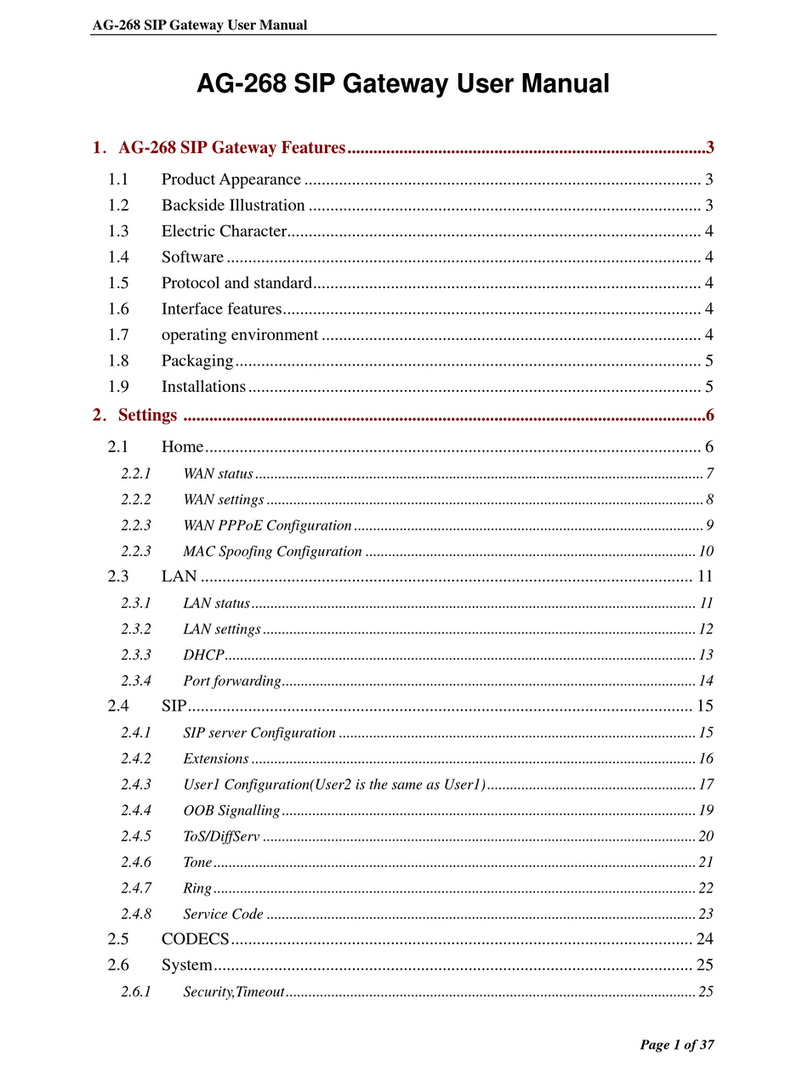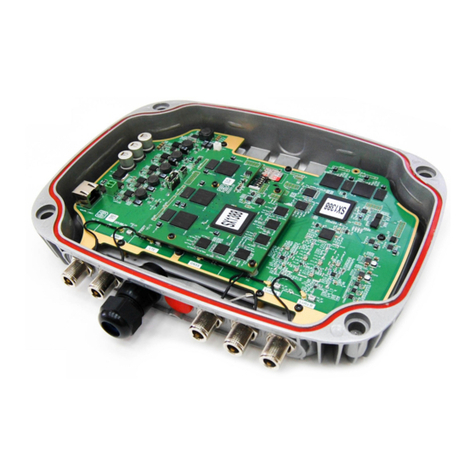
5/9
Technical data sheet: S000114124EN-1 Updated: Created: 11/01/2023
Cat. No(s): 0 026 99
KNX DALI Gateway
7.COMMUNICATION OBJECTS continued
7.2 Communication Object Descriptions (continued)
No Function Name DPT type Length Flags
5 Device status Feedback Non-DPT 3 bytes CWT
This communication object is used for getting all current faults and
states of a DALI device in one comprehensive telegram. In order to
make a read request, a write should be made to object with read/
response bit is set.
Object consists of three bytes. Higher two bytes of telegram contains
all fault and state data and lowest byte contains DALI address of
subjected device and information of whether telegram is a status
request or sent status.
• Object will be activated if“Enable “Device status”object” parameter
in Feedback tab is selected as“enable”.
• Feedback will be sent only after a request if“transmit mode”
parameter in Feedback tab is selected as“after request”or only after
a value change if parameter is selected as“after change”. Feedback
will be sent on both occasions if the parameter is selected as“after
change or request”.
Bit numbers and data which they represented is explained below:
23 22 21 20 19 18 17 16 15 14 13 12 11 10 9 8 7 6 5 4 3 2 1 0
Byte Bit Field Description
1
Bit 0 - 5 DALI device address [0 - 63]
Bit 6 Reserved and should be '0'
Bit 7 Read or response flag: '1' = read, '0' = response
2
Bit 8 Device offline flag: '1'= offline, '0'= online
Bit 9 Device malfunction flag:'1'= failure '0' = no failure
Bit 10 Lampe failure flag:'1'= failure '0' = no failure
Bit 11 Reserved and should be '0'
Bit 12 Reserved and should be '0'
Bit 13 Reserved and should be '0'
Bit 14 Reserved and should be '0'
Bit 15 Reserved and should be '0'
3
Bit 16 Reserved and should be '0'
Bit 17 Reserved and should be '0'
Bit 18 Reserved and should be '0'
Bit 19 Short circuit flag:'1'= failure, '0'=no failure (LED only)
Bit 20 Open circuit flag:'1'= failure, '0'=no failure (LED only)
Bit 21 Current protector active flag:'1'=failure, '0'=no failure (LED only)
Bit 22 Thermal shutdown flag:'1'=failure, '0'=no failure (LED only)
Bit 23 Reserved
6 Coded status switch Feedback Non-DPT 2 byte CWT
This object is used to get switch status of a DALI group or an individual
DALI ballast/driver. In order to make a read request, a write should be
made to object with read/response bit is set.
• Object consists of two bytes. High byte of telegram contains switch
status and low byte contains DALI address of subjected device or
group number, information of whether telegram is a status request
or sent status and information of whether a device or a group is
selected.
• Object will be activated if“Enable “Coded status switch ” object”
parameter in Feedback tab is selected as“enable”.
• Feedback will be sent only after a request if“transmit mode”
parameter in Feedback tab is selected as“after request”or only after
a value change if parameter is selected as“after change”. Feedback
will be sent on both occasions if the parameter is selected as“after
change or request”.
Bit numbers and data which they represented is explained below:
15 14 13 12 11 10 9 8 7 6 5 4 3 2 1 0
Byte Bit Field Description
1
Bit 0 - 5 DALI device address [0 - 63] or DALI group number[0 - 15]
Bit 6 Individual device or group flag: '1' = device address, '0' = group number
Bit 7 Read or response flag: '1' = read, '0' = response
2Bit 8 Swtich status:'1'= ON, '0'=OFF (DPT 1.001)
Bit 9-15 Reserved
7.COMMUNICATION OBJECTS continued
7.2 Communication Object Descriptions (continued)
No Function Name DPT type Length Flags
7 Coded status brightness value Feedback Non-DPT 2 byte CWT
This object is used to get brightness value of a DALI group or an
individual DALI ballast/driver. In order to make a read request, a write
should be made to object with read/response bit is set.
Object consists of two bytes. High byte of telegram contains
brightness value and low byte contains DALI address of subjected
device or group number, information of whether telegram is a status
request or sent status and information of whether a device or a group
is selected.
• Object will be activated if“Enable “Coded status brightness value”
object” parameter in Feedback tab is selected as“enable”.
• Feedback will be sent only after a request if“transmit mode”
parameter in Feedback tab is selected as“after request”or only after
a value change if parameter is selected as“after change”. Feedback
will be sent on both occasions if the parameter is selected as“after
change or request”.
Bit numbers and data which they represented is explained below:
15 14 13 12 11 10 9 8 7 6 5 4 3 2 1 0
Byte Bit Field Description
1
Bit 0 - 5 DALI device address [0 - 63] or DALI group number[0 - 15]
Bit 6 Individual device or group flag:'0'=device address, '1'=group number
Bit 7 Read or response flag: '1' = read, '0' = response
2 Bit 8 - 15 Brightness value [0 - 255] (DPT 5.001)
8 Coded faults Feedback 237.600 2 byte CWT
This object is used to get fault data of a DALI group or an individual
DALI device. In order to make a read request, a write should be made
to object with read/response bit is set.
Object consists of two bytes. High byte of telegram contains fault
data and low byte contains DALI address of subjected device or group
number, information of whether telegram is a status request or sent
status and information of whether a device or a group is selected.
• Object will be activated if“Enable “Coded faults” object” parameter
in Feedback tab is selected as“enable”.
• Feedback will be sent only after a request if“transmit mode”
parameter in Feedback tab is selected as“after request”or only after
a value change if parameter is selected as“after change”. Feedback
will be sent on both occasions if the parameter is selected as“after
change or request”.
Bit numbers and data which they represented is explained below:
15 14 13 12 11 10 9 8 7 6 5 4 3 2 1 0
Byte Bit Field Description
1
Bit 0 - 5 DALI device address [0 - 63] or DALI group number[0 - 15]
Bit 6 Individual device or group flag: '1' = device address, '0' = group number
Bit 7 Read or response flag: '1' = read, '0' = response
2
Bit 8 Device is offline or malfunction flag: '1' = failure '0' = no failure
Bit 9 Lamp failure flag: '1' = failure '0' = no failure
Bit 10 Reserved
Bit 11-15 Reserved
9 DALI line fault Feedback 1.005 1 bit CRT
This object is used for reporting DALI gateway supply fault. Possible
causes of the fault are no mains connection to gateway supply
terminal, power supply malfunction or short circuiting DALI line more
than 100ms.
• Object will be activated if“Enable “Fault gateway supply” object”
parameter in Feedback tab is selected as “enable”.
• Feedback will be sent only after a request if “transmit mode”
parameter in Feedback tab is selected as“after request”or only after
a value change if parameter is selected as“after change”. Feedback
will be sent on both occasions if the parameter is selected as“after
change or request”.
(value“0” = gateway supply works properly,
value“1” = gateway supply fault)
